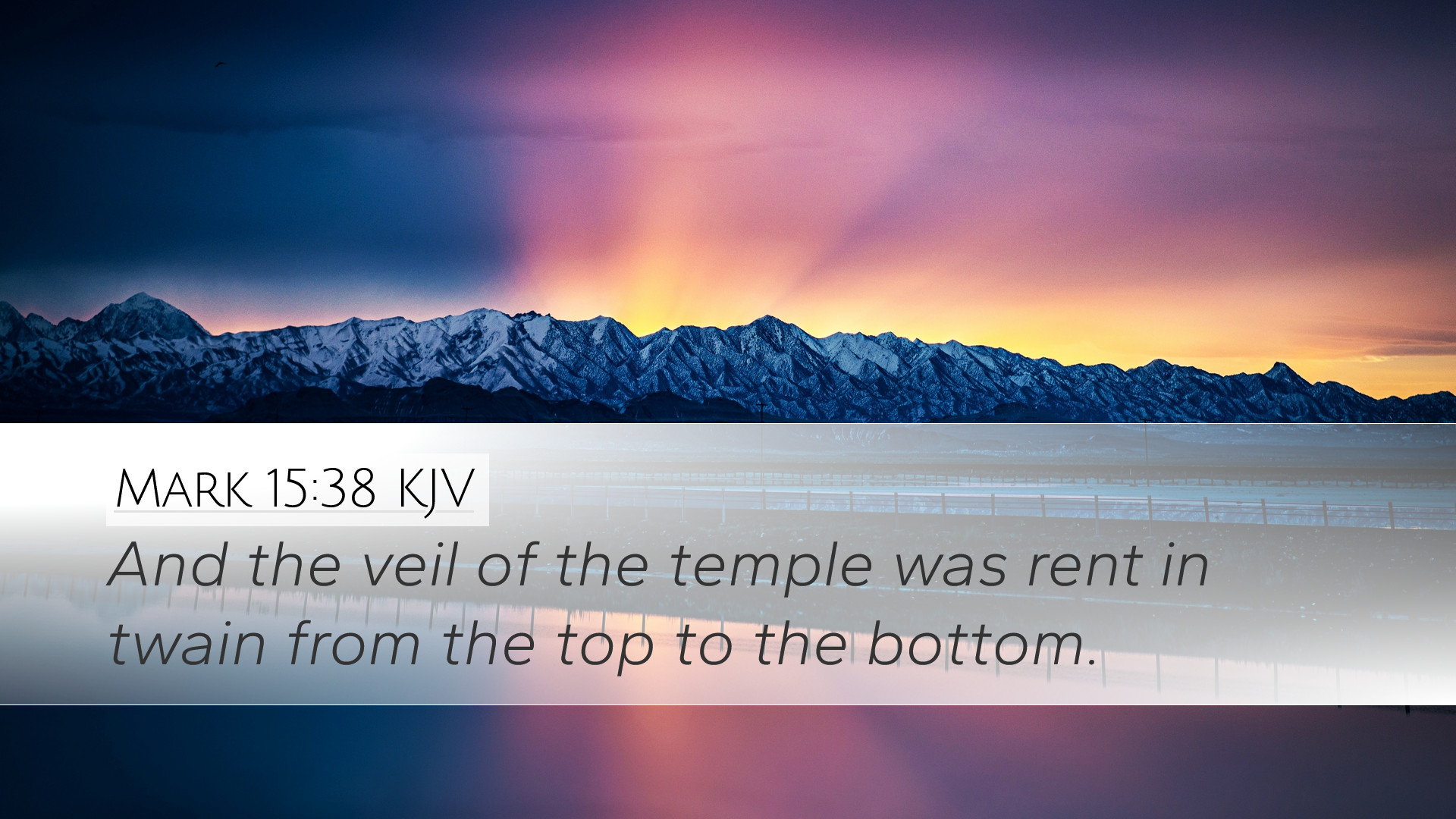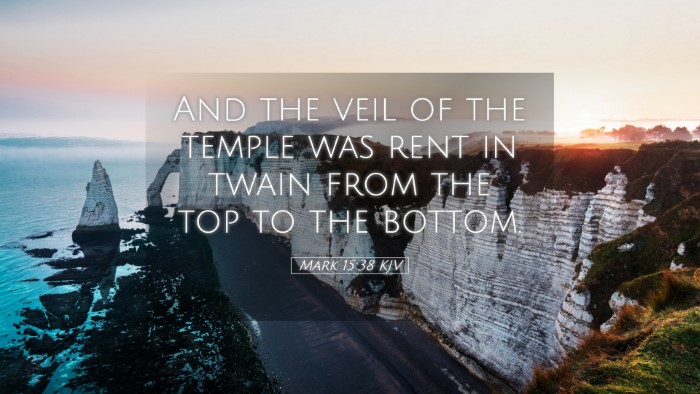Commentary on Mark 15:38
Bible Verse: Mark 15:38 - "And the curtain of the temple was torn in two, from top to bottom."
This significant event, occurring at the moment of Jesus' death, is laden with theological implications and provides deep insights into the transition from the Old Covenant to the New Covenant. The act of the curtain being torn signifies a pivotal moment in redemptive history.
1. Background and Context
The temple curtain was a heavy drapery that separated the Holy Place from the Holy of Holies— the innermost sanctuary where the presence of God resided. This separation indicated the holiness of God and the sinfulness of humanity. According to Jewish tradition, only the high priest could enter this sacred space, and only once a year on the Day of Atonement.
2. Theological Significance
The tearing of the temple curtain symbolizes the removal of barriers between God and humanity caused by sin. As Albert Barnes notes, "This remarkable event indicates the abolition of the old ritual and ceremonial law that separated man from God." Adam Clarke emphasizes that the tearing from top to bottom signifies a divine act, not a human one, reinforcing God's initiative in the salvation of mankind.
2.1. Access to God
Matthew Henry interprets the tearing as a sign that, through Christ's sacrificial death, believers now have direct access to God without the need for intermediaries. This is reaffirmed in Hebrews 10:19-22, where the author encourages believers to enter the Most Holy Place with confidence through the blood of Jesus.
2.2. The End of the Sacrificial System
In addition to granting access, this event signifies the end of the old sacrificial system. Adam Clarke states, "It marked the conclusion of all Old Testament sacrifices, as the true Lamb of God has been offered." The tearing of the curtain symbolizes that Christ's sacrifice is sufficient for atonement once and for all.
3. Historical Perspectives
Furthermore, the historical context of the temple and its rituals play a crucial role in understanding the significance of this event. Commentators highlight the weight of the temple in Jewish worship, and the curtain’s tearing can be seen as a divine judgment on the temple system itself.
3.1. Jewish Tradition
Jewish tradition held the temple as the center of worship and a symbol of God’s presence among His people. The act of tearing the curtain would have signified a profound upheaval in religious practices. Matthew Henry reflects that "the destruction of the temple and its practices was imminent," providing a foreshadowing of the ultimate judgment against those who rejected Christ.
4. Implications for Believers
- Assurance of Salvation: The tearing of the curtain offers assurance that believers can approach God boldly and with confidence.
- Call to Ministry: It emphasizes the priesthood of all believers, calling them to serve as representatives of God in the world.
- The Emphasis on a Personal Relationship: This signifies that a personal relationship with Christ grants access to God, not through rituals but through faith.
5. Conclusion
In summary, Mark 15:38 serves as a monumental declaration of the shift in God’s covenantal relationship with humanity. The tearing of the temple curtain encapsulates the profound truth of Jesus' sacrificial death, emphasizing that through Him, all barriers to God's presence have been obliterated. Pastors, students, and theologians alike should regard this moment not only as an event of historical significance but as a continual reminder of the grace and freedom believers have in approaching God directly.


